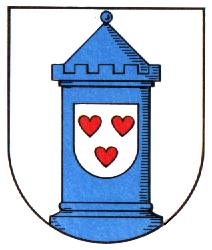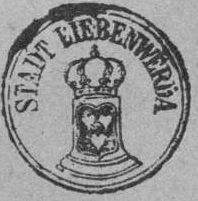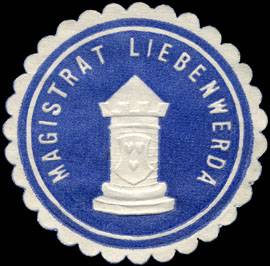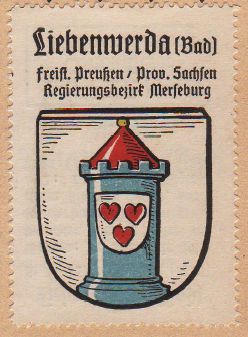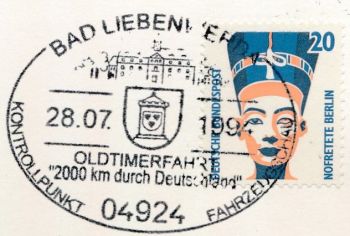Bad Liebenwerda: Difference between revisions
Knorrepoes (talk | contribs) m (Text replacement - "{{media}}" to " {{de1}} {{media1}}") |
Knorrepoes (talk | contribs) m (Text replacement - "{{de}}" to "") |
||
| Line 1: | Line 1: | ||
'''BAD LIEBENWERDA''' | '''BAD LIEBENWERDA''' | ||
Revision as of 14:04, 26 December 2022
BAD LIEBENWERDA
State : Brandenburg
District (Kreis) : Elbe-Elster
Additions : 1992 Dobra, Kosilenzien, Lausitz, Oschätzchen; 1993 Burxdorf, Kröbeln, Langenrieth, Maasdorf, Neuburxdorf, Prieschka, Thalberg, Theisa, Zeischa, Zobersdorf; 2002 Möglenz
| German |
Silber ein fenster- und torloser, bezinnter, spitzbedachter und beknaufter blauer Rundturm, belegt mit einem silbernen Schild, darin drei (2 : 1) rote Herzen. |
| English | Liebenwerda No blazon/translation known. Please click here to send your (heraldic !) blazon or translation |
Origin/meaning
The arms were officially granted on September 14, 1993, but are known from 1487.
The tower is the Lubwartturm, a landmark of the city and the only remaining part of the medieval castle.
The meaning of the small shield with the hearts is not clear. Two main theories exist about them. The first is that the shield originally shoed the arms of the Brehma county, which were three water-lily leaves. Later these leaves were misinterpreted as hearts.
The second theory states that the hearts are taken from the arms of the Lord of Ileburg, who used three stars in their arms and were lords of the city in the 13th century (the castle and tower already existed by then). Like in the first theory, the stars were later misinterpreted as hearts.
| The municipal stamp shown in 1892 |
Seal from around 1900 |
| The arms by Hupp in the Kaffee Hag albums +/- 1925 |
Postal cancellation 1994 |
Literature: Bensing et al., 1984
